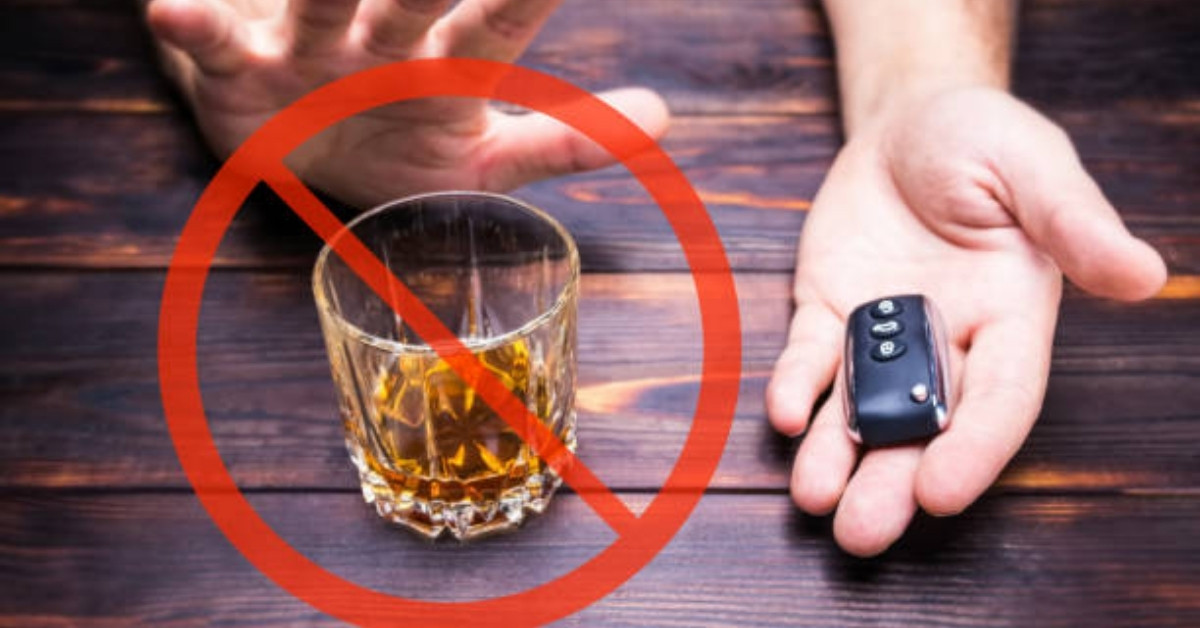Understanding Addiction Treatment During Pregnancy
Importance of Seeking Help
Seeking addiction treatment during pregnancy is crucial for the health and safety of both the mother and the developing baby. It is essential for pregnant individuals struggling with substance use to recognize that assistance is available and that reaching out for help can lead to positive outcomes. Early intervention can reduce risks associated with substance use, promoting healthier pregnancies and improved neonatal health.
| Benefits of Seeking Help | Description |
| Improved Maternal Health | Access to support and resources to address addiction. |
| Fetal Health Protection | Decreased likelihood of complications for the baby. |
| Emotional Support | Connection to mental health resources and counseling. |
| Education and Resources | Knowledge about maintaining a healthy pregnancy. |
Risks of Untreated Addiction During Pregnancy
Untreated addiction during pregnancy poses significant risks for both the mother and the unborn child. Substance use can have severe consequences, impacting fetal development and increasing the possibility of various health issues.
| Risks of Untreated Addiction | Potential Consequences |
| Low Birth Weight | Higher risks of complications during delivery and development. |
| Preterm Birth | Increased chances of neonatal health challenges. |
| Neonatal Abstinence Syndrome (NAS) | Withdrawal symptoms in newborns requiring medical intervention. |
| Long-Term Developmental Issues | Potential for cognitive and behavioral problems in children. |
Understanding the importance of seeking treatment and the serious risks of untreated addiction can empower pregnant individuals to take proactive steps towards recovery. By accessing appropriate care, they can protect their health and create a positive environment for their baby.
Seeking Support for Addiction Treatment
Finding the right support for addiction treatment during pregnancy is crucial for both the mother and the baby’s health. Various aspects need consideration to ensure an effective journey toward recovery.
Finding the Right Treatment Program
Choosing a suitable treatment program is essential. Factors such as the type of addiction, the stage of pregnancy, and individual circumstances must be taken into account. It is important to explore programs that specialize in treating pregnant individuals, as they often provide tailored care to meet specific needs.
| Treatment Program Type | Description | Key Focus Areas |
| Inpatient Rehabilitation | A facility-based program where individuals stay on-site for intensive treatment. | 24/7 medical care, supportive environment, group therapy |
| Outpatient Rehabilitation | A program that allows individuals to live at home while attending therapy sessions. | Flexibility, support while maintaining daily responsibilities |
| Dual Diagnosis Programs | Programs for those with both substance use disorders and mental health conditions. | Integrated treatment of addiction and mental health issues, holistic approach |
Benefits of Comprehensive Care
Comprehensive care encompasses a range of services tailored to address both physical and mental health needs. This kind of care promotes a better overall outcome for mothers and their babies. Here are some benefits of choosing comprehensive addiction treatment during pregnancy:
| Benefit | Description |
| Personalization | Treatment plans are tailored to individual needs, considering health history and circumstances. |
| Coordinated Services | Integration of various services such as medical care, counseling, and support groups ensures holistic treatment. |
| Continuous Support | Ongoing assistance helps in managing recovery not just during treatment but also post-delivery. |
| Improved Maternal and Fetal Health | Comprehensive care focuses on maintaining the health of both mother and child, reducing the risk of complications. |
| Access to Specialists | Professionals from various fields, such as psychologists and obstetricians, work together to provide well-rounded care. |
Finding the right treatment program and ensuring comprehensive care can greatly enhance the chances of successful recovery. It is crucial to approach this journey with the support of healthcare professionals and a strong support network.
Inclusive Treatment Approaches
Developing a comprehensive approach to addiction treatment during pregnancy is essential for ensuring both maternal and fetal health. Several treatment methods can be employed to address addiction in a supportive manner.
Medication-Assisted Therapy
Medication-assisted therapy (MAT) combines the use of medications with counseling and behavioral therapies. This approach helps to treat substance use disorders while minimizing withdrawal symptoms and cravings. MAT is particularly effective for opioid dependence and has shown to improve pregnancy outcomes.
| Medication Type | Commonly Used For | Benefits |
| Methadone | Opioid dependence | Reduces withdrawal symptoms |
| Buprenorphine | Opioid dependence | Lower risk of overdose |
| Naltrexone | Opioid and alcohol use | Supports long-term recovery |
Behavioral Therapy
Behavioral therapy plays a crucial role in addressing the psychological aspects of addiction. This form of therapy helps individuals develop coping strategies, understand triggers, and improve their overall mental health. Various types of behavioral therapies may be incorporated into treatment plans during pregnancy.
| Therapy Type | Description | Goals |
| Cognitive Behavioral Therapy (CBT) | Examines thoughts and behaviors | Change negative thought patterns |
| Contingency Management | Provides rewards for positive behaviors | Reinforce healthy habits |
| Motivational Interviewing | Enhances motivation for change | Strengthen commitment to sobriety |
Support Groups
Support groups offer a community of individuals who share similar experiences. They provide a safe space for expectant mothers to share their challenges and successes in recovery. Support groups can be particularly beneficial for building a network of encouragement and accountability.
| Support Group Type | Focus | Benefits |
| 12-Step Programs | Alcohol and drug dependency | Spiritual support and camaraderie |
| Women-Specific Groups | Issues unique to women | Tailored support for pregnancy-related concerns |
| Online Support Groups | Virtual connections for convenience | Flexibility and accessibility |
Inclusive treatment approaches that integrate medication-assisted therapy, behavioral therapy, and support groups can significantly enhance the likelihood of successful recovery during pregnancy. These methods aim to address the physical, emotional, and social aspects of addiction, providing pregnant individuals with the tools and resources to reclaim their health and well-being.
Ensuring Safety and Health
Ensuring the safety and health of both the mother and the fetus during addiction treatment is paramount. This involves closely monitoring maternal and fetal health and carefully addressing withdrawal symptoms that may arise.
Monitoring Maternal and Fetal Health
Regular monitoring of maternal and fetal health is critical throughout the treatment process. Healthcare providers use various methods to assess the well-being of both the mother and the developing baby.
| Monitoring Aspect | Frequency | Purpose |
| Regular Prenatal Checkups | Monthly (first two trimesters), biweekly (third trimester) | Track overall health, assess fetal development |
| Ultrasound Exams | Every 18-20 weeks | Evaluate fetal growth and anatomy |
| Blood Tests | Each trimester | Assess maternal health and detect any issues early |
Healthcare providers will also evaluate specific factors such as substance use, mental health, and overall lifestyle, allowing for tailored care that meets individual needs during treatment.
Addressing Withdrawal Symptoms
Withdrawal symptoms can present both challenges and risks for pregnant individuals. Proper management is essential to ensure maternal and fetal health remains stable throughout the recovery process.
| Withdrawal Symptom | Potential Impact | Response Strategies |
| Nausea | Impacts nutrition | Anti-nausea medications |
| Anxiety | Affects mental health | Counseling and support |
| Cravings | Risk of relapse | Behavioral therapies |
| Physical Discomfort | Stress on maternal health | Pain management techniques |
Medical professionals may implement a structured plan to manage withdrawal symptoms effectively, aiming to prevent complications that could affect the mother or her baby. This approach may include the use of support mechanisms and individualized treatment strategies to maintain stability throughout the addiction treatment process.
Long-Term Recovery and Wellness
Achieving and maintaining long-term recovery from addiction during pregnancy is a crucial aspect of ensuring both maternal and infant health. Creating a supportive environment and establishing effective postpartum care can significantly influence recovery outcomes.
Building a Supportive Environment
A supportive environment plays a vital role in a woman’s journey to recovery during and after pregnancy. This includes physical, emotional, and social support systems that can foster stability and positivity.
Factors to consider when building a supportive environment include:
| Factor | Description |
| Family Support | Involvement of family members in the recovery process can provide emotional comfort and practical assistance. |
| Friendship Networks | Encouragement from friends can enhance motivation and reduce feelings of isolation. |
| Professional Support | Access to healthcare providers, counselors, and addiction specialists who understand the unique challenges faced can improve overall outcomes. |
| Safe Living Conditions | Ensuring a safe, drug-free living space is crucial for focus and stability. |
| Community Resources | Engagement with local support groups and community programs can provide additional layers of encouragement and accountability. |
Postpartum Care and Follow-Up
After childbirth, continued care is essential. Postpartum care should address both physical health and mental wellness.
Components of effective postpartum care include:
| Component | Importance |
| Regular Medical Check-Ups | Monitoring recovery from childbirth and addressing any lingering addiction issues can prevent relapse. |
| Mental Health Support | Counseling or therapy can help in processing experiences related to addiction and motherhood. |
| Nutritional Guidance | Proper diet aids in recovery and supports breastfeeding, if applicable. |
| Support Groups | Participation in support groups, both for new mothers and those in recovery, promotes sharing experiences and receiving encouragement. |
| Child-Parent Interaction Programs | Engaging in activities that promote bonding can aid in emotional healing for both mother and child. |
Fostering a strong support system and prioritizing postpartum care is essential for those seeking addiction treatment during pregnancy. By emphasizing these aspects, women can enhance their recovery journey and create a healthier future for themselves and their families.
Empowering Yourself and Your Baby
Celebrating Progress
Recognizing and celebrating progress is vital during the journey of addiction treatment, especially during pregnancy. Each small step toward sobriety is a significant achievement worth acknowledging. Tracking progress can help boost morale and provide motivation to continue on the path to recovery.
| Milestones | Description |
| First Week of Clean Time | Acknowledge completion of the first week without substances. |
| First Doctor Appointment | Celebrate the first prenatal appointment attended without substance use. |
| Completing Therapy Sessions | Recognize the completion of initial therapy sessions or treatment programs. |
| Positive Lifestyle Changes | Acknowledge changes in diet, exercise, and self-care that promote health. |
Recognizing these milestones can empower individuals in treatment, fostering a sense of accomplishment and commitment to continued recovery.
Creating a Healthy Future for Your Family
Creating a healthy future for oneself and the baby is a priority for those seeking addiction treatment during pregnancy. It is important to implement strategies that promote well-being for both mother and child. Here are several areas to focus on for future health:
| Focus Area | Strategies |
| Nutrition | Incorporate a balanced diet rich in essential vitamins and minerals. |
| Regular Check-Ups | Schedule regular healthcare appointments for both maternal and fetal health. |
| Emotional Wellness | Engage in therapy or support groups to maintain mental health. |
| Support System | Build a reliable network of family and friends to provide encouragement. |
Establishing a holistic approach to wellness can ensure a nurturing environment for the baby. By prioritizing physical and emotional health, new parents can set a strong foundation for their family’s future.
Sources
https://www.armsacres.com/seeking-addiction-treatment-during-pregnancy
https://www.rosewoodrecovery.com/seeking-addiction-treatment-during-pregnancy
https://www.legendsrecovery.com/seeking-addiction-treatment-during-pregnancy










